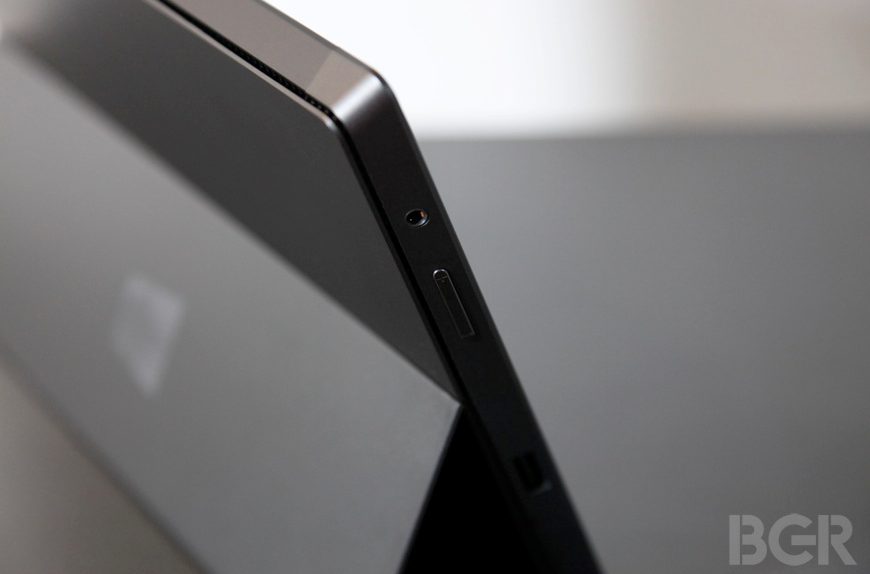After reviewing Microsoft’s Surface tablet last October, I came back a month later and revisited the slate after spending a more substantial amount of time with it. My conclusion was very much the same — I love the Surface hardware but some of the tablet’s software issues are hard to overlook — but I added an important note: the Surface was a good tablet, but it felt like an appetizer. What I really wanted was the main course.
Enter Microsoft’s Surface Pro.
I have spent plenty of time with the latest Microsoft (MSFT) tablet since reviewing it earlier this month and my feelings on the device have not changed. I like it. I like it a lot.
The Surface Pro adds some inevitable thickness and weight to the original Surface design and the battery life is slightly weaker than that of its nearest competitor, the 11-inch MacBook Air, but the overall experience is outstanding. This tablet-shaped notebook is fast, smooth and remarkably portable for a PC with a full-HD display.
Microsoft’s second slate also brings a massive tried and true app ecosystem to the table thanks to Windows 8’s compatibility with just about every legacy Windows app one might throw at it. The lack of available apps was a major pain point with the Windows RT-powered Surface, so this is a huge relief.
Since I took delivery of my Surface Pro review unit from Microsoft, I must admit I hadn’t paid much attention to the original Surface tablet until yesterday. I picked up the slender slate, dusted it off and powered it on with the intention of penning a comparison piece between the two Surface tablets. But after spending about a minute with the device, I decided not to bother.
After using Microsoft’s Surface Pro for nearly a month, going back to the first Surface tablet is absolutely agonizing.
Upon logging into Windows RT, the first thing I saw on the Surface’s home screen was an indication on the Windows Store tile that several apps had updates waiting to be downloaded. This made sense, of course, considering it had been almost a month since I last used the tablet.
So I tapped the Windows Store icon. And I waited. And waited.
The seven seconds it took for that app to open seemed like an eternity after using the third-generation Core i5-powered Surface Pro. In fact, I had almost forgotten what the animated icon that indicates Windows is thinking looked like because I never see it for longer than a fraction of a second on the Surface Pro.
But I updated the 10 Windows RT apps that needed updating on my Surface and then backed out to the home screen, where I tapped the Mail tile to open Microsoft’s email app. And I waited. And waited. Once the app did finally open and I began to scroll through my email, the scrolling got caught several times instead of moving smoothly as it does on the Surface Pro.
At this point, I just sighed and turned the tablet off.
What a shame the Surface is. The hardware is absolutely gorgeous and the software shows such promise with its novel user interface and zero-touch access to a variety of information updated in real-time. But after spending time with the Surface Pro and remembering what the Windows user experience should be like, it becomes painfully obvious that the Surface is underpowered and Windows RT underperforms.
In the end, it might be for the best that Microsoft probably sold fewer than 1 million of these things last quarter. The Surface is a direct competitor to Apple’s (AAPL) iPad, and the fourth-generation iPad offers what is probably one of the smoothest user experiences on the planet. It’s almost impossible to trip up under heavy strain, let alone by simply trying to open the App Store or the Mail app.
Microsoft’s Surface Pro, on the other hand, is a great match for its rivals. The pricing is about the same and more importantly, performance is on par with other modern devices. It’s smooth, it handles multitasking like a notebook computer should, and it doesn’t take seven seconds to open an app.
It’s looking like Microsoft may have plans to follow the Surface with a smaller tablet, but if it does it should take heed: The Surface Pro offers the kind of user experience we now expect from a Microsoft-branded Windows device, and anything less is simply unacceptable.[bgr-post-bug]




